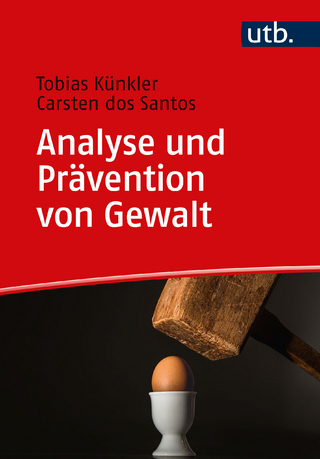
A Field Guide to Community Literacy
Routledge (Verlag)
978-1-032-13187-0 (ISBN)
This practical guidebook presents trends, research-grounded strategies, and field-based solutions to challenges of working in community-based literacy initiatives. A comprehensive guide for practitioners, this book addresses best practices for implementing, maintaining, expanding, and evaluating community-based literacy initiatives. The contributors in this volume help readers shift thinking from merely considering, "How can communities support literacy?" to "How can literacy help us create, support, and strengthen communities?"
Organized into four parts – on building community through literacy, program design, case studies from the field, and program evaluation – chapters cover research-based and innovative practices in a diverse range of populations and settings, including family services, adult literacy initiatives, community centers, and tutoring programs. With an abundance of praxis-oriented examples and real-world strategies from top scholars and practitioners, the book serves as a roadmap for essential topics, including funding, writing grant proposals, handling audits, and conducting research within program settings. With templates, models, planning tools, and checklists ready for immediate use, this book is an invaluable field manual for individuals involved in community literacy work, researchers, and students in literacy-oriented courses either at the undergraduate or graduate levels.
Laurie A. Henry is Professor of Literacy at Salisbury University, USA, and Dean of the Seidel School of Education. Norman A. Stahl is Professor Emeritus of Literacy Education at Northern Illinois University, USA, and President of the Reading Hall of Fame.
Section One: Building Community through Literacy
Chapter 1: Adult Literacy Education and the Work of Community Building
Erik Jacobson
Chapter 2: The Community as Educator: Historical and Contemporary Responses by Economically, Culturally, and Linguistically Marginalized Communities to the Colonization of Literacy in Education
Ann Bennett
Chapter 3: Family Engagement: Results that Matter
Kim Jacobs, Joshua Cramer, Wendee Mullikin, & Laura Westberg
Chapter 4: Unsettling Community and University: Finding Fluidity in Community Literacies and the Academy
Gemma Cooper-Novack & Brice Nordquist
Section Two: Setting the Stage for Program Design
Chapter 5: The Community Literacy Audit: Evaluating Community Literacy Needs to Ensure Equitable Literacy Education
Ann Bennett
Chapter 6: Conducting a Community Literacy Audit
Tara Wilson
Chapter 7: Urban Literacy Education as a Vehicle for Social Change: A Community Audit of Charlotte, North Carolina
Candace Chambers & Annette Teasdell
Chapter 8: From Idea to Reality: Creating and Implementing an Early Literacy Action Plan with Community Partners
Terry S. Atkinson, Kimberly L. Anderson, & Elizabeth A. Swaggerty
Chapter 9: Understanding the Psychology of Getting Funded
Beverly Browning
Section Three: Case Studies from the Field
Chapter 10: More than Contaminated Water: Flint, Michigan's Community-Wide Efforts for Literacy
Chad Waldron
Chapter 11: Leveraging Tutoring Center Literacy
Katherine Marsh
Chapter 12: The Chinatown Youth Organizing Project (CYOP): Community Literacies for Social Justice Mary Yee
Chapter 13: Health Literacy in a Diabetes Education Center
Megan Hughes
Chapter 14: Little Free Libraries: Fostering Access to Reading Materials while Developing Community Ties Peggy Semingson & Karabi Bezboruah
Chapter 15: Indigenous-led, Community-based Language Reclamation and Regeneration Initiatives
M. Kristiina Montero, Spy Dénommé-Welch, & Stanley R. Henry
Chapter 16: Examining the 826 National Model for Scaling Up Community-School Literacy Partnerships Susan Cridland-Hughes & Mary Schreuder
Chapter 17: University-based Literacy Clinics
Brian Flores, Amber Meyer, Willian Tignor, & Dixie Massey
Section Four: Evaluating and Researching Community Literacy Programs
Chapter 18: Methods and Models for Literacy Program Evaluations
Vincent Genareo
Chapter 19: Community-based Qualitative Approaches to Studying Literacy
Laura Johnson
Chapter 20: Quantitative Modeling Approaches for Studying Literacy in the Community
Jan K. Holt & Diana J. Zaleski
Appendices
| Erscheinungsdatum | 21.04.2022 |
|---|---|
| Zusatzinfo | 7 Tables, black and white; 5 Line drawings, black and white; 7 Halftones, black and white; 12 Illustrations, black and white |
| Verlagsort | London |
| Sprache | englisch |
| Maße | 152 x 229 mm |
| Gewicht | 453 g |
| Themenwelt | Sozialwissenschaften ► Pädagogik ► Erwachsenenbildung |
| Sozialwissenschaften ► Pädagogik ► Schulpädagogik / Grundschule | |
| ISBN-10 | 1-032-13187-X / 103213187X |
| ISBN-13 | 978-1-032-13187-0 / 9781032131870 |
| Zustand | Neuware |
| Informationen gemäß Produktsicherheitsverordnung (GPSR) | |
| Haben Sie eine Frage zum Produkt? |
aus dem Bereich


